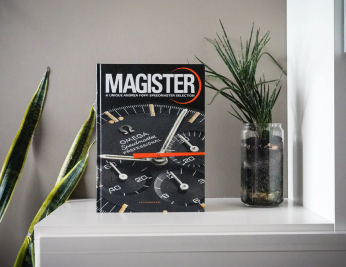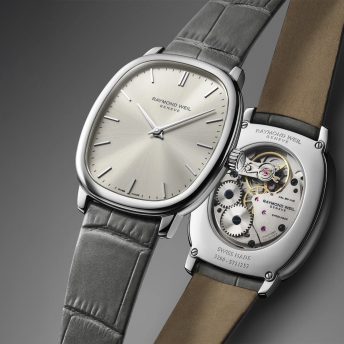Watchmaking is a centuries-old art whose goal has always been the same: precision. The development of technology and innovative materials has furthered this, drastically reducing the daily scrap. One need only think of the invention of the balance wheel, or the genius of Breguet with the tourbillon; inventions that have truly revolutionized the mechanics and precision of timepieces.
Although the accuracy of watches has increased over the centuries, there has always been one factor that has marred, and not a little, namely the regular oscillation of the balance wheel. Since the latter is made of ferrous materials, mainly aluminum, it is affected by the magnetic fields produced both by the earth and by the electronic devices that are now part of everyday life, going to compromise the accuracy of our beloved timepieces.
Let us now take a closer look at these concepts.
Why does a watch become magnetized?

To understand clock magnetization, it is important to start with the concept of magnetism.
Magnetism is a physical phenomenon generated by the movement of electrical charges and is present everywhere in our environment. The earth’s magnetic field, for example, can be represented as a set of lines of force forming a circuit between magnetic poles.
From a physical point of view, magnetism has enormous importance, but in watchmaking it can pose a problem. In fact, if we bring a magnet close to the back of a watch, we may notice an alteration in the movement, with the second hand possibly freezing or accelerating erratically. This happens because the balance spring (i.e., the regulating organ of a mechanical watch that determines the precision of each timepiece), often made of ferromagnetic metal alloys, can adhere to nearby components due to magnetic attraction, compromising the regularity of the oscillations.

Today the problem is amplified by the daily use of electronic devices, such as smartphones and laptops, that contain small permanent magnets (e.g., in speakers and magnetic latches). These can generate magnetic fields intense enough to alter the accuracy of a watch, leading to a speeding up or slowing down of its operation.
How do you combat magnetism?
In order to protect watches from the effects of magnetism, over the years maisons have developed various solutions that can mitigate or eliminate the problem.
One of the first solutions was introduced by Rolex in 1955 with the Milgauss, a watch designed for scientists and technicians exposed to intense magnetic fields, such as those found in CERN laboratories. The Milgauss protects the movement from electromagnetic effects up to 1,000 Gauss, from which it takes its name (“thousand Gauss”).

In this case Rolex exploited an ingenious invention: the Faraday cage around the movement. The Faraday cage is a metal structure (in the case of Rolex’s Milgauss it consists of a double case back) that blocks electromagnetic fields. This works by distributing electrical charges on its outer surface, preventing electric fields and electromagnetic waves from penetrating the interior. Conversely, if electrical charges were inside, the cage would act as an insulator, preventing them from escaping-this is exactly how a microwave oven works.
To understand the importance of magnetic fields in watchmaking, just consider that theFederal Institute of Metrology (METAS) has established a certification that evaluates not only the precision of the movement but also its resistance to magnetic fields. To obtain METAS certification, a watch must first pass the COSC tests and then demonstrate that it maintains its accuracy even when exposed to a magnetic field of 15,000 Gauss.
Silicon: a revolutionary material against magnetism

As I mentioned at the beginning of the article, the development of materials has also contributed in counteracting magnetism. An important innovation of this century, which definitely changed the watchmaking industry, was silicon. This extremely light material, almost as light as carbon, has quite a few advantages. It is used to make the balance-spring escapement because of its properties of lightness, anti-magnetism and resistance to thermal expansion, guaranteeing perfect oscillation of the balance in all conditions and reducing the daily deviation considerably.
Because silicon is a very smooth material, it provides optimal sliding without the need for lubrication, ensuring consistent precision over time and less maintenance without degrading. These characteristics have made this material one of the greatest innovations of the past 25 years, revolutionizing the regulating organ within a movement.
When Magnetism can become the friend of clocks
Just as happens a few times in movies, the enemy can become a decisive ally, and that is exactly what has happened in watchmaking. Over the years, technology has made it possible to exploit electromagnetic effects to one’s advantage, and who could do that but Breguet and Grand Seiko? Two brands that don’t like simple things at all. Let’s see what this is all about.
Breguet 7727

In 2013, after years of research and development, Breguet introduced a new timepiece by handling magnets with exemplary skill. It is in fact the first watch to harness a magnetic field to support the balance-spring assembly.

Thanks to this invention, Breguet does not merely contain the negative effects of magnetism on mechanical watches: it even succeeds in taming them. The balance wheel is thus able to oscillate at 10Hz, or 72,000 vibrations per hour thanks to almost zero friction, enabling the watch to boast an average rate of -1/+3 seconds per day, a result superior to COSC standards that instead stand at -4/+6 seconds per day.
Grand Seiko’s Spring Drive Movement

Even in Japan they have thought well of exploiting magnetism to optimize the functioning of watches. In fact, inside Grand Seiko’s Spring Drive movement, we find a magnetic component that, through impulses derived from an integrated circuit, regulates the oscillation of the balance wheel by braking it if it is too fast, so as to ensure optimal precision and smooth running of the seconds hand. Grand Seiko was one of the first houses to offer a product that could integrate magnets to use them to its advantage, greatly increasing the company’s precision and quality standards.
Conclusion
Today we saw how, sometimes, a phenomenon that on the surface can be harmful and negative turns out to be a strong utility, managing to be instrumental in creating something unique, just as happened with the Breguet 7727.
Visit our Youtube channel to experience the best of the world of watchmaking firsthand.
For all real-time updates follow us on Instagram.












